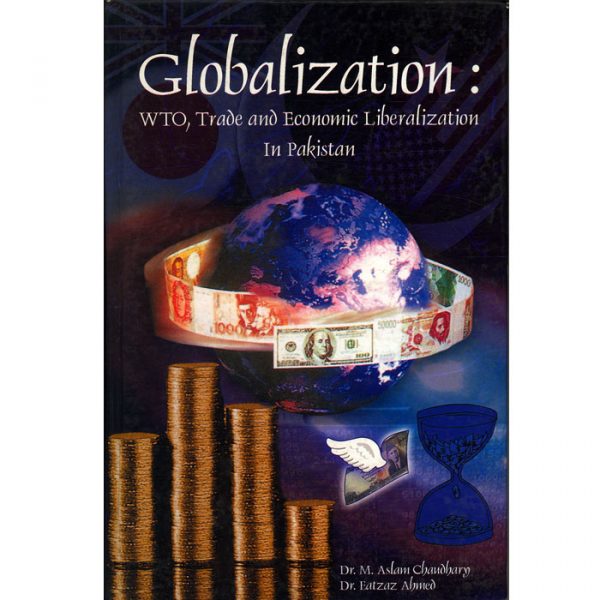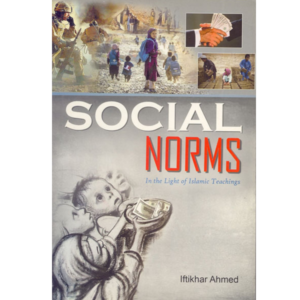Globalization, a new dimension of international economic relations has gained significant importance due to its implications for international trade, foreign direct investment, environment issues and new development challenges for developing countries. Thus, globalization is at the top of research agenda for all major institutes. International debt, debt servicing and mass poverty are current major economic problems of the developing world. Globalization and liberalization is being presented as express train to high level of development. The advocates of neo-liberalization also argue that whether heavy debt and poverty-ridden countries will be able to pull themselves out of these traps. It appears that they have no choice but to ride on the train, therefore, they must engage in deregulation, liberalization, and privatization and more on towards free trade. Since 1980’s, many countries are engaged in structural reforms, liberalization of domestic markets and rehabilitation of industries. More than 200 structural adjustment and liberalization programs have been initiated in Sub-Saharan Africa alone. Pakistan’has liberalized and privatized its economy more than its commitments with the WTO. Yet, the fruits of the progress remained to be seen in these countries and elsewhere. In spite of the above, some developing countries will gain from the globalization while some will loose and become marginalized in relation to other countries. To date, East Asia has gained the most, while the situation is fragile in Latin America and South Asia. The question remains whether to embrace globalization, if you cannot fight globalization. It also appears that resistance to globalization has not been successful. A new window for regionalism is opened, which may help in generating regional co-operation and it may serve as a minor help to face these challenges of the new era. The marginalization need not be seen as an error. There may also be a need for endogenous development agenda to cope with the emerging challenges. The stronger is such agenda; the better a country may handle new emerging problems.The book is an effort to reply to most of the fears and hopes for gains emerging from globalization and liberalization. Under the umbrella of an international conference on globalization, eminent scholars, academicians and policy makers around the world were invited to express their views and share fears, as well as, their research work on the new emerging
11
international economic issues. Experts from national and international institutes, government agencies, universities and policy managers presented their research work in the conference. The papers presented and discussed were refereed and reviewed, before these articles became a part of this book The book consists upon an invited lecture and four parts; focused on: (a) Globalization, competition and trade (b) Exchange rate, prices and trade (c) Trade, Aid and economic development and (d) Globalization and emerges economic issues.The invited lecture was focused on the core issue of international debt, which is a challenge for the development of developing countries. The foreign debt alone is washing away more than 3 % of GDP of the most indebted countries, as debt servicing. Their trade is playing a negligible role in their development, since debt servicing is eating up almost 25% of their foreign exchange earnings from exports. Besides, Income inequalities are increasing. South Asia consisting upon 22% of the world population hardly own 1.5% of the world income. Therefore, it seems no ray of hope that these countries can come out of debt trap, mass poverty and evils of income inequalities. It is a fear that if these trends were to continue, these countries will end up loosing more than 5% of their GDP every year just to pay debt servicing. Keeping in view the above and population growth rate in such developing countries, it appears that even if these countries may grow over 6%, their per capita income growth will be negative. These countries are selling public entities to payoff debt and debt services. How these countries can face the new challenges of globalization is an added challenge for them. The book has highlighted most of these fears and dreams from liberalization of developing economies.New findings pertaining to the impacts of current economic reforms in Pakistan, globalization, Japanese Economy and Asian Crises, trade competition, market diversification and comparative advantage of industrial production in Pakistan are new additions to the existing research work on the subject matter. New research findings on exchange rate determination, purchasing power parity, interest rates and their role in international flow of capital and on the economy are new addition to the literature. Based upon empirical findings, future course of action is also proposed to reshape commercial policies and future economic reforms. Professor Abe in his article conveyed an important message that we must not forget long run effects, while focusing too much on short run gains. It is important while evaluating impacts of current reforms of liberalization and globalization. The long run gains may outplay short run fears and loses. Thus, focus of research must also be on long run. All the above are new contributions to the economic literature. This book is expected to play pioneering role in promoting research and knowledge on the impacts of economic reforms,
13
liberalization, privatization and globalization. The book is equally beneficial for researchers, academicians, postgraduate students and policy makers.The book is an outcome of the efforts of several quarters. It is not possible to mention and thank them all. Never the less, we would like to put on record the financial support of the Japan Foundation and Cooperation of the Embassy of Japan, in Pakistan. Particularly, Mr. Hajime Kido, Councilor/Director, Press Information and Culture, showed special interest and cooperation to support the completion of the project. He may have completed his term and gone back to Japan when this book will be published. But his contributions will remain forever. Two Vice Chancellors, Dr. M. Tariq Siddqui, Former V.c. Quaid-e-Azam University and Lt. Gen. (R) Arshad Mahmood, V.c. University of The Punjab showed liberal attitude to promote research and publication of this book. The project could never be completed without their generous help. All the faculty members of The Department of Economics, Quaid-e-Azam University, Islamabad deserve special appreciation for their all cooperation. They were always ready to take up any assignment pertaining to the organization of the international conference and publication of this book, particularly, Dr. M. A. Chaudhary, Dr. A. A. Burki, Dr. Aliya H. Khan and Dr. M. Tariq Javeed deserves special thanks for their extra ordinary help in the publication of this book. Some of the above cited faculty members have now left the university but they contributed in extra-ordinarily delaying the publication but did not compromise on the quality of the book. Mr. Zaheer-ul-Islam, publisher of this book also delayed the publication but wanted to be sure about the quality. He reviewed several drafts and took special interest to promote this piece of research work.We tried hard to improve, as much as, we could but, of course, all that remains is ours’. Notwithstanding the above, we welcome suggestions and reservations for our future improvement.
April 2004
Prof Dr. M. Aslam Chaudhary & Prof Dr. Eatzaz Ahmed








